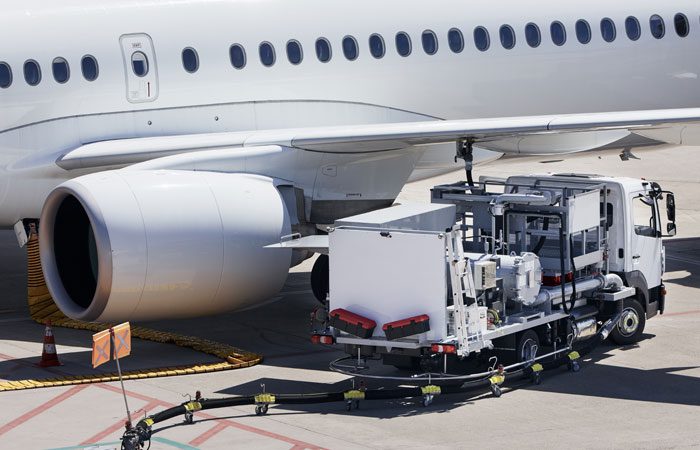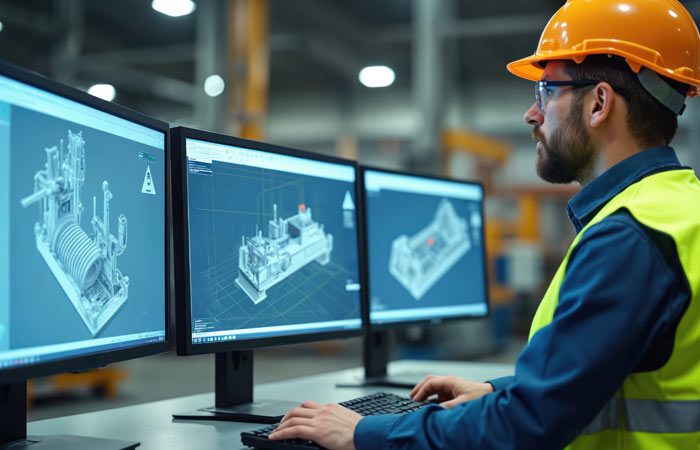
Fuel System Design Considerations for Modern Aircraft: Engineering Efficiency, Safety, and Performance
In the complex anatomy of an aircraft, few systems are as vital — or as intricately engineered — as its fuel system. Beyond simply storing and delivering fuel, modern aircraft fuel systems are intelligent networks that balance efficiency, safety, and performance in extreme operating conditions. From managing temperature differentials at 40,000 feet to maintaining uninterrupted flow during rapid attitude changes, aircraft fuel system design has evolved into a discipline where precision and reliability are paramount.
Today, as aviation moves toward sustainable propulsion and enhanced operational efficiency, the science of fuel system engineering for aircraft stands at the center of innovation.
What is the Role of Fuel Systems in Modern Aircraft?
A modern aircraft fuel system does far more than supply fuel to engines. It performs multiple critical tasks simultaneously — storing, transferring, venting, and monitoring fuel while ensuring center-of-gravity control and redundancy for safety. The system must operate flawlessly under variations in altitude, temperature, and pressure, and must integrate seamlessly with the avionics and flight control systems.
The core objectives of aerospace fuel system design include:
- Efficient fuel delivery under all flight conditions.
- Balanced fuel distribution to maintain aircraft stability and control.
- Redundant routing to prevent engine starvation or pump cavitation.
- Contamination control to ensure purity and prevent clogging of critical components.
- Safety compliance with FAA and EASA regulations for flammability, leakage, and venting.
Modern designs also incorporate electronic aircraft fuel management systems (AFMS) that automate monitoring, balancing, and fault detection — turning what was once a manual process into a fully integrated digital operation.
Core Components and Architecture
A typical fuel system in a commercial or business jet comprises multiple interconnected tanks — located in wings, fuselage, and sometimes in the tail section — linked by pumps, valves, filters, and sensors. Key fuel system components in aircraft include:
- Fuel Tanks: Designed with anti-slosh baffles and inerting systems to prevent fuel vapor ignition.
- Boost Pumps: Ensure consistent fuel flow from tanks to engines, even during steep climbs or turbulence.
- Transfer Pumps: Move fuel between tanks for balance and sequencing.
- Fuel Lines and Valves: Constructed with lightweight, corrosion-resistant materials to handle high pressure and varying temperatures.
- Fuel Filters and Strainers: Remove contaminants before they reach critical components.
- Vent and Surge Tanks: Maintain pressure equilibrium and prevent overfill or vacuum conditions.
- Sensors and Gauges: Provide continuous data to the cockpit and maintenance systems for real-time monitoring.
The architecture of a modern aircraft fuel system is therefore a fine balance of hydraulics, electronics, and safety engineering — optimized for performance without adding unnecessary weight.
Safety First: Redundancy and Risk Mitigation
Safety is the soul of aerospace design, and nowhere is it more evident than in aircraft fuel system safety considerations. Every subsystem is built with redundancy — if one pump fails, another takes over; if one line gets blocked, an alternate route maintains fuel flow.
Fuel tanks are equipped with nitrogen inerting systems to minimize fire risks by reducing oxygen concentration within the tank. Valves are designed with failsafe positions, ensuring that in the event of electrical loss, the system defaults to a safe state.
Thermal management is another critical aspect — during flight at high altitudes, fuel acts as both an energy source and a coolant for engine oil and electronic systems. Engineers must ensure that the fuel temperature remains within safe limits to prevent waxing or vapor lock.
Equally important is the prevention of fuel imbalance, which could affect the aircraft’s center of gravity. Modern aircraft fuel management systems automatically redistribute fuel between tanks to maintain equilibrium, even during long-haul or multi-segment operations.
Efficiency and Sustainability: The New Frontier
In the era of green aviation, fuel efficiency considerations in aircraft design are no longer confined to aerodynamics and engine performance — they begin right at the fuel system level. Lightweight composite materials are replacing metallic tanks and lines to reduce overall aircraft weight.
Fuel routing and tank geometry are being optimized for minimum residuals, ensuring maximum usable volume without compromising stability. Smart sensors powered by digital twin data models predict consumption patterns and help pilots plan the most efficient routing and transfer sequences.
The result is a fuel system that’s not just a mechanical network, but an intelligent ecosystem that contributes directly to sustainability goals and cost savings.
Testing, Validation, and Maintenance
No fuel system reaches the skies without exhaustive fuel system maintenance and testing. The testing regime for an aircraft’s fuel system includes:
- Pressure and Leak Tests: Ensuring structural integrity of tanks and lines.
- Flow Rate Verification: Confirming the system can deliver fuel at required rates under simulated flight conditions.
- Functional Tests: Verifying all pumps, valves, and sensors perform as expected.
- Fire and Flammability Tests: Evaluating system resilience under potential hazard conditions.
- Contamination Control Tests: Ensuring filtration and purity across the system.
During operation, regular maintenance includes inspections for corrosion, seal degradation, and microbial contamination — particularly in humid or high-altitude conditions. Predictive analytics, increasingly powered by AI and digital twins, now enable engineers to detect anomalies early, significantly reducing downtime and maintenance costs.
Digitalization and Smart Fuel Systems
The convergence of IoT and aerospace design has ushered in the era of the aircraft fuel system digital twin — a virtual representation that continuously mirrors real-time system performance. Engineers can now simulate scenarios such as pump failures, leak detection, or temperature fluctuations, and implement software updates remotely to improve efficiency or safety margins.
Combined with advanced data analytics, this approach transforms the traditional maintenance model into a predictive one — where faults are not just fixed but foreseen. The integration of AI-powered fuel management systems further enhances situational awareness, allowing flight crews and maintenance engineers to make data-driven decisions on fuel distribution and consumption.
Partnering for Excellence: The Engineering Behind the System
Behind every safe and efficient fuel system lies years of domain expertise, precision modeling, and rigorous certification knowledge. Engineering partners specializing in aerospace engineering services for fuel system design bring together multidisciplinary teams that understand aerodynamics, structures, controls, and thermal management — ensuring that every line, pump, and valve performs flawlessly across the aircraft’s lifecycle.
TAAL Tech, a global engineering and digital services provider, supports OEMs and Tier-1 suppliers with advanced fuel system engineering for aircraft, including system modeling, fluid dynamics analysis, component validation, and compliance documentation. Its integrated design-to-certification approach helps aerospace clients accelerate innovation while meeting the highest safety and performance standards.
The Future of Fuel Systems: Toward Hybrid and Hydrogen Propulsion
As the aviation industry transitions toward sustainable propulsion, aerospace fuel system design will undergo its most profound evolution yet. Future aircraft will require adaptable architectures capable of handling hydrogen, sustainable aviation fuels (SAF), or hybrid-electric energy sources.
This transformation will demand not just re-engineering of storage and delivery systems but also a new generation of thermal management and safety protocols. The foundational principles, however, will remain the same — uncompromising safety, precision control, and efficient fuel utilization.
In this context, the future of aircraft fuel system design isn’t just about managing fuel — it’s about managing transformation. As aviation engineers continue to balance innovation with reliability, the next generation of fuel systems will not only power flight but define the sustainability of air travel itself.


